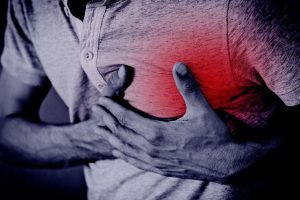 Atherosclerosis is a disease of the arteries which lead to accumulations of fat cells and calcium deposits (i.e., plaques). It has been shown that people with a rapid increase in the amount of calcium deposits have a higher risk for stroke and heart attack than people with a decreased amount. Many of these individuals have been instructed by their physician to simply take 1200mg of calcium daily to offset the likes of osteoporosis, which is contributing to this problem!
Atherosclerosis is a disease of the arteries which lead to accumulations of fat cells and calcium deposits (i.e., plaques). It has been shown that people with a rapid increase in the amount of calcium deposits have a higher risk for stroke and heart attack than people with a decreased amount. Many of these individuals have been instructed by their physician to simply take 1200mg of calcium daily to offset the likes of osteoporosis, which is contributing to this problem!
Taking 1200mg of dolomite, oyster shell calcium, bone meal, or calcium carbonate is in no-way beneficial. Getting the right calcium is just the beginning as it requires a few assistants, one of which is a form of vitamin K.
It’s Vitamin K2 and is associated with the inhibition of arterial calcification and arterial stiffening. An adequate intake of vitamin K2 has been shown to lower the risk of vascular damage because it activates matrix GLA protein (MGP), which inhibits the deposits of calcium on not only the walls of the arteries, but the entire network of the circulatory system.
In the groups receiving high-dose vitamin K2 (MK-4), not only was there no further arterial calcium accumulation there was also a 37% reduction of previously accumulated arterial calcification after six weeks! After 12 weeks, there was a 53% reduction in accumulated arterial calcium deposits!
Conclusion:
Medical peer reviewed papers support considering adding vitamin K2 to a quality calcium and a healthy lifestyle protocol (cardio/resistant exercise, Paleo-Diet, relaxation, flexibility exercises, etc.) to reverse the damaging effects of arterial calcification and arterial stiffening. And so do we. After all, we’re all about helping you achieve “the best performance of your life!” And that includes clean arteries!
God bless,
DrB
References:
healthline.com/nutrition/vitamin-k2#bottom-line
lifeextension.com/magazine/2017/11/vitamin-k-and-arterial-stiffness
ahajournals.org/doi/10.1161/HYPERTENSIONAHA.118.12157
clinicaltrials.gov/ct2/show/NCT04010578
ncbi.nlm.nih.gov/pmc/articles/PMC4566462/
pubmed.ncbi.nlm.nih.gov/26176325/
sciencedaily.com/releases/2009/10/091006093345.htm



